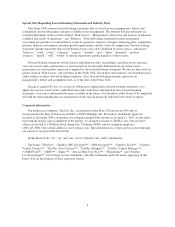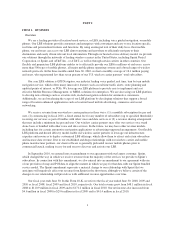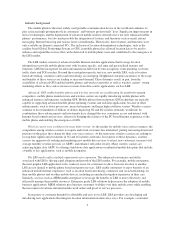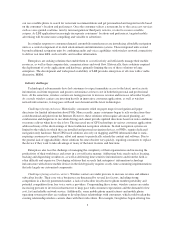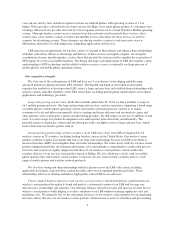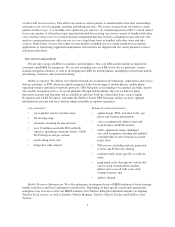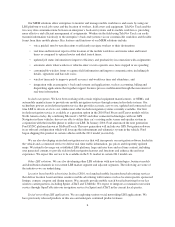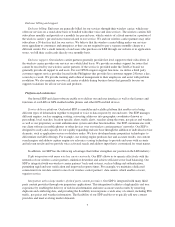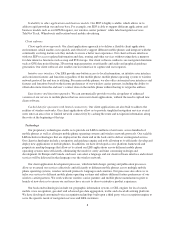TeleNav 2010 Annual Report Download - page 13
Download and view the complete annual report
Please find page 13 of the 2010 TeleNav annual report below. You can navigate through the pages in the report by either clicking on the pages listed below, or by using the keyword search tool below to find specific information within the annual report.Our current research and development efforts are focused on:
• improving and expanding features, functionality and performance of our existing services;
• developing applications, services and products for new mobile phones, mobile phone operating systems
and emerging wireless network technologies; and
• developing key technology and content to reduce third party costs.
Our development strategy is to identify features, services and products that are, or are expected to be,
needed or desired by our end users. We also work closely with our wireless carrier partners to develop and offer
service features that are attractive to their subscriber base, which are complementary to their other offered
applications, and strategies to address their need to increase subscribers and revenue.
As of June 30, 2010, our research and development team consisted of 686 people, 190 of whom are located
in Sunnyvale, California and 496 of whom are located in Beijing, Shanghai and Xi’an, China. We have been
successful in creating cross border capabilities in the United States and China for high value engineering at low
cost. Our U.S. and China research and development operations function together on service and product
development and extension of our existing services to new mobile phones. Our research and development
expenses were $13.7 million, $23.5 million and $41.6 million for fiscal 2008, fiscal 2009 and fiscal 2010,
respectively. We expect that the number of our research and development personnel will continue to increase
over time and that the absolute dollar amount of our research and development expenses will also increase.
Marketing and sales
We rely on the extensive distribution channels of our wireless carrier partners to expand the adoption of our
LBS. In addition, we sell our LBS to end users through our website and mobile phone application stores, such as
Apple’s iTunes App Store. We focus the majority of our marketing efforts on supporting our wireless carrier
partners’ marketing programs to promote our LBS to their subscribers through either our wireless carrier
partners’ white label or our own branded version of our solution. This strategy enables us to leverage the
marketing resources of our wireless carrier partners and minimize our sales and marketing costs.
Marketing. Our wireless carrier partners are our primary source of marketing to end users. They employ a
variety of marketing programs to sell our LBS, including promotion in retail stores and through their sales forces,
and through television, radio, Internet and print advertising. We also implement selected public relations
activities to support the launch of our LBS on new devices or the release of new LBS.
We typically provide original marketing and promotion materials, as well as electronic sales tools, to the
wireless carrier partners with which we work closely to drive the adoption of our LBS. We also provide a limited
number of demonstration subscriptions for use by our wireless carrier partners’ sales and marketing personnel.
Our wireless carrier partners generally determine the distribution channels to be used and ensure that the
marketing materials are accessible to their direct and indirect sales forces, which may include third party
distribution vendors. We often assist our wireless carrier partners with trade shows and other events at their
request. We also provide our wireless carrier partners with access to application demonstrations and self-guided
training.
Sales. Our wireless carrier partners are primarily responsible for obtaining our end users through their sales
and marketing efforts to their existing and potential subscribers. For example, mobile phones enabled with our
LBS are sold in AT&T’s direct channels, such as retail stores, and through the AT&T website and indirect
channels, such as national retail partners and indirect dealers. Certain of our wireless carrier partners offer our
LBS as part of a bundle of services, such as Sprint’s Simply Everything plans. Bundling of our LBS with voice
and/or data packages has led to substantial increases in the number of our new end users. At June 30, 2010, we
had a sales team consisting of 43 employees that focus on selling our MRM products and services to enterprise
10


